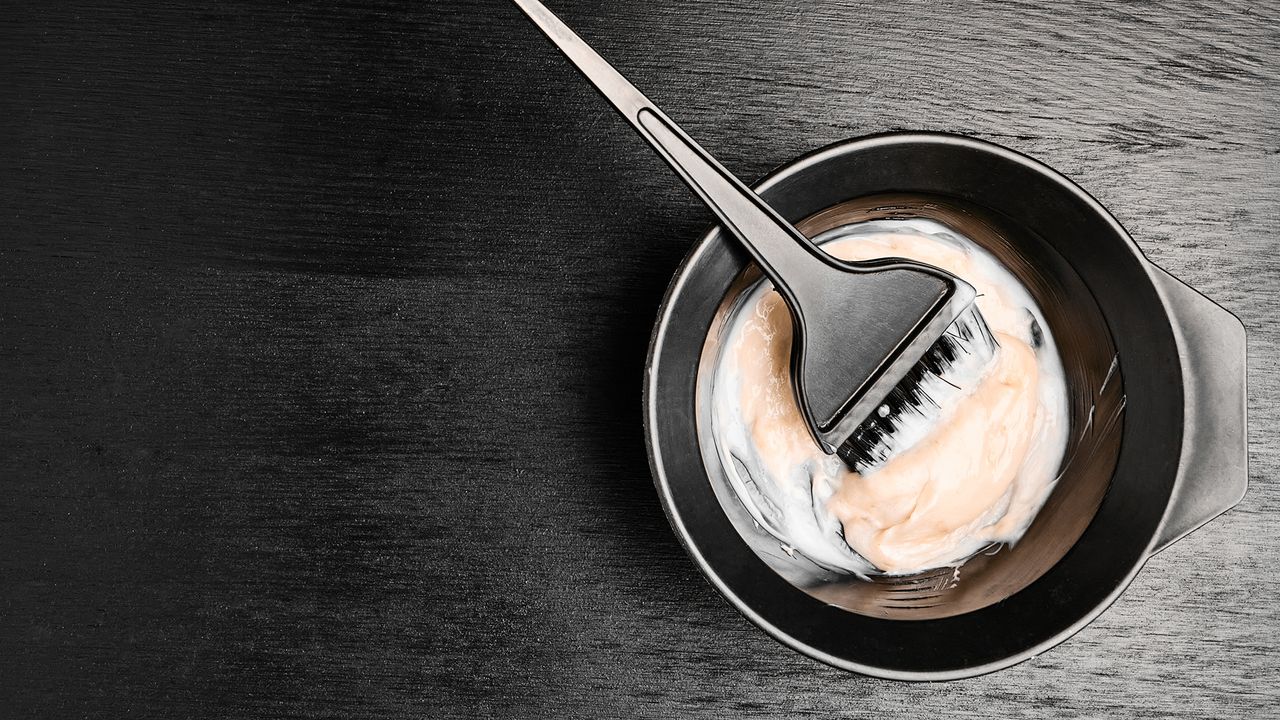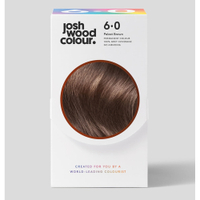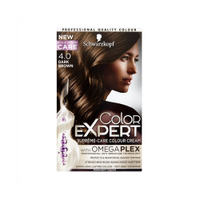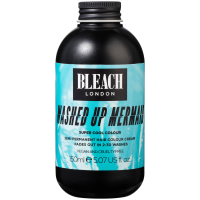How to dye your own hair at home (and avoid a disaster)
How to dye your own hair - the tips and tricks to make sure it looks like you've just come from the salon, every time


How to dye your own hair - the tips and tricks to make sure it looks like you've just come from the salon, every time
Not everyone has the time to visit the hair salon, let alone sit in the stylist's chair for a good two or three hours getting their hair dyed. Sometimes box colour is the only option, which is why it's super important to know how to dye hair at home properly.
You might not be able to create expert dip dye, ombre hair, or balayage yourself, but there are rules to follow when doing your roots or going for a completely new colour.
There's a reason why being a 'hair colourist' is an actual profession – it's all about getting the right formula to get the exact shade you want. So if you are thinking about drastically changing your colour, we'd recommend visiting a specialist with a few hair colour ideas in hand.
But, if you're thinking about covering up your greys, going darker or adding blonde highlights to frame your face, here a few tips and tricks will help you get salon results at home.

How to dye your hair at home
1. Buy two boxes
Imagine getting halfway and realising you've run out. If your hair is past your shoulders, or short and thick, we recommend you will need two boxes to cover your full head.
2. Do a patch test
You have no idea whether you're skin is going to react to the chemicals from the hair dye or not, so you must always do a patch test. It's better to find out now, rather than later...
Marie Claire Newsletter
Celebrity news, beauty, fashion advice, and fascinating features, delivered straight to your inbox!
3. Do a strand test
We know you're excited about change, but you need to do this properly. You need to check that your current hair colour reacts well with the formula, because if the change resembles something more like swamp water, you won't be so happy. (Keep scrolling with our tips on exactly how to do both a patch and strand test.)
3. Keep your hairline clean
Swipe some lip balm along your hairline where you don't want any dye to go. This will stop it from dying your skin, which can take days to get off. It's one of the biggest tips on how to colour your own hair.
4. Brush your hair
Make sure your hair is untangled before you begin, even the smallest knot can cause a big problem.
5. Section your hair
Professionals always section hair into four parts - down the middle, and then from ear to ear across the crown. Dye the front sections first because these are the most visible, so need the full processing time.
6. Don't use the bottle
Yes, that's what's normally provided in the box, but squeezing dye straight onto your hair won't give you a salon finish. Instead, play colourist and use a mixing bowl and a colour brush to apply the dye.
7. Use a toothbrush
If you just want to add some highlights, use a clean toothbrush or mascara wand and apply where the sun would normally lighten your hair (i.e, around your face and on the tips). This will give you natural looking highlights.
8. Start from the top
Always start at your roots when dyeing your whole head a different colour - this area will need longer to develop the colour - then comb through to the ends.
9. Wash your hair properly
Don't shampoo immediately after dyeing your hair, just rinse out with water initially. When you do shampoo your hair, make sure it's sulphate-free Sulphates cause your hair shaft to swell and encourage the colour to leach out.
The best at-home hair colour
Hair connoisseur Josh Wood released his own line of professional haircare for consumers to use at-home for hair tinting. The range includes shampoos, conditioners, root touch-up brushes and a 'colour shot' toning mask.
The hair dye is exceptional, easily blending through your whole head of hair to cover all outgrown roots without painstakingly combing through paper-thin layers. It's easy to use, with the results you'd get in the chair.
Going that one step further, you can pop onto his website, answer a few questions about your hair's needs and you'll be directed to the products that you need. And you can even pop onto YouTube for extra tips and tricks from the man himself.
The first at-home colour with ‘omegaplex’ anti-breakage technology. Complete with a serum shot, repair sealer and repair reviver, this Schwarzkopf product is designed to protect the hair bonds, seal colour and even repair the hair after three weeks. Think less breakage and a choice of 15 shades of vibrant colour, from blonde to black.
Bleach London
If you're feeling adventurous and, rather than muted brunette, you would rather bright yellow or punchy blue tresses, then there really is no other brand to consider.
Bleach London are the kings and queens of alternative colour and their completely vegan range is available in Boots, starting at the deliciously low price of £6. Incidentally, these are the colours that are used in their salons as well.
With names like Awkward Peach, The Big Pink and Washed Up Mermaid these colours aren't for the feint-harted, but you might just be tempted once you take a look at their Instagram...
How to do a patch test
Here are Josh Wood's tips on how to do a patch test:
1. Mix a coin-sized amount of the colour activator and the colour together in a bowl.
2. Use a cotton bud to apply a small amount behind your ear.
3. Leave it on for 48 hours, you shouldn’t even notice it’s there. Try not to wash it off within this time frame.
4. Tip: It’s very important to fasten the caps on the bottles tightly after you have opened them for the patch test. If you do not, the products may oxidise, and the active ingredients will not work.
5. If you have any signs of reaction to the patch test, wash it off immediately and do not use the colour.
6. If you show no signs of reaction to the dye, go ahead and use the colour as instructed.
How to do a strand test
You may have heard of a strand test, but still be asking yourself, what the heck is it? A strand test is a preliminary test of the hair. It determines its suitability for processing, aka dyeing. Here's how to do a strand test:
Do a strand test on a section of hair about 1/4 inch thick (choose from underneath so you can hide it) to see if your hair will pick up the colour you're aiming for.
1. Put on protective gloves.
2. Choose a strand of hair to test.
3. Separate the rest of your hair away using plastic clips so that the strand does not touch the rest of the hair after the hair colour is applied. Then dye that strand.
4. Wait 24 hours to make sure you are happy with the hair colour results.
5. If you are happy with the colour, go forth and dye away.
How to dye your hair blonde
It's a lot easier to go a darker colour because you're adding pigment to your hair; if you want to dye your hair blonde, it's more difficult because you're taking pigment out. Firstly, you should have an idea of the blonde hairstyles you like the look of. Secondly, read up on everything you need to know about going blonde.
The key to getting a great blonde shade is to work with the natural colour on the parting to allow for an organic texture that doesn’t look stripy. If your hair is naturally a more ashy tone, go for an ashy blonde. Similarly if your roots have a touch of redness, go for a champagne hue.
And remember, you might have to dye your hair more than once to get the blonde you want. The best thing you can do for your hair is have an Olaplex hair treatment to improve the quality of hair in between these sessions, as this will stop it form going brittle, and to use one of the best purple shampoos when washing your hair to keep brassiness at bay.
How to dye your hair silver
Many of the same rules apply to dyeing your hair silver, or any other lighter colours like pink and blue. The key is to ensure your hair is bleached beforehand. Once this is done, you can then apply your silver rinse.
First, don't wash your hair for 48 hours. The natural oil will help protect your scalp against any bleaching irritation. Apply a purple toner first to take out any yellowness from your bleached hair. Then, apply your dye as per the steps above. Once you have the desired colour, maintain it by shampooing with the best sulphate-free shampoo.
And there you have it, the complete guide on how to dye your hair at home.
Take your time, follow our instructions and your hair will look good as new in no time.
Katie Thomas is the Senior Beauty Editor at Marie Claire UK. With over 10 years of experience on women's luxury lifestyle titles, she covers everything from the best beauty looks from the red carpet and stand out trends from the catwalk, to colonic irrigation and to the best mascaras on the market. She started her career on fashion desks across the industry - from The Telegraph to Brides - but found her calling in the Tatler beauty department. From there she moved to Instyle, before joining the Marie Claire digital team in 2018. She’s made it her own personal mission to find the best concealer in the world to cover her tenacious dark circles. She’s obsessed with skincare that makes her skin bouncy and glowy, low-maintenance hair that doesn’t require brushing and a cracking good manicure. Oh and she wears more jewellery than the Queen.


